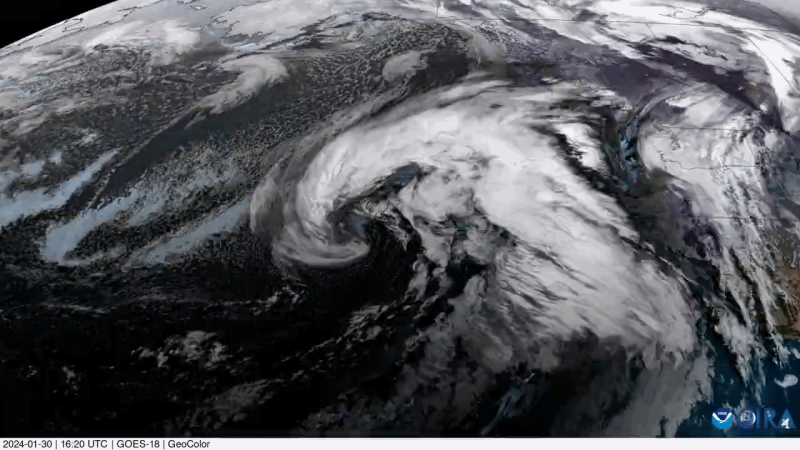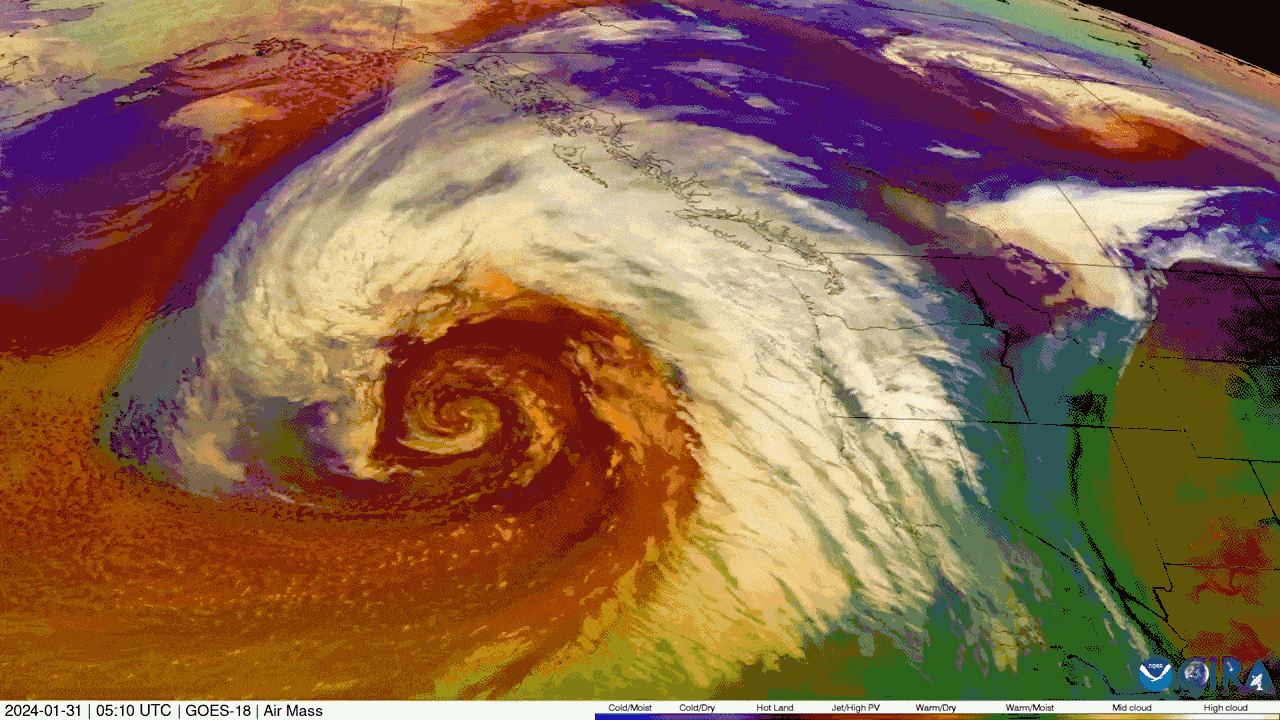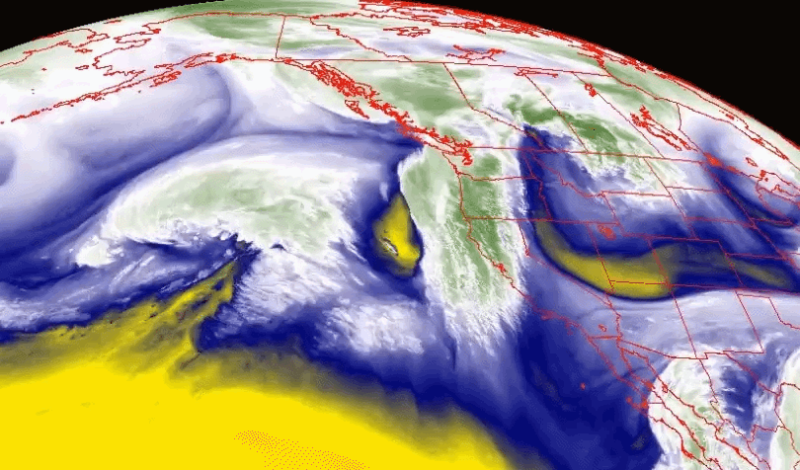Satellite images show massive atmospheric river that is barreling over the West Coast
Weather advisories were in effect for parts of the West Coast this week as powerful atmospheric rivers barreled in from the Pacific Ocean. Satellite images from the National Oceanic and Atmospheric Administration captured the massive storms as they approached the coast, where they threatened to cause flooding and damage.
Atmospheric rivers are long regions in the atmosphere that transport water. The water vapor they carry is roughly equivalent to the average flow of water at the mouth of the Mississippi River, according to NOAA. So, when they make landfall and release all that water, they can cause extreme flooding.

According to The Weather Channel, there are typically three to seven atmospheric rivers present in the world at any given time. They don't only happen on the West Coast of the U.S., but a well-known atmospheric river, the "Pineapple Express," does occur in this region.
The Pineapple Express is known to wallop the U.S. and Canada's West Coasts with heavy rainfall and snow after building in the Pacific Ocean around Hawaii, according to NOAA. California can see up to five inches of rain in one day when the Pineapple Express arrives.
Back-to-back storms that pummeled the West Coast this week flowed along the Pineapple Express.

Northern California and parts of the state's central and southern regions were expected to get three to five inches of rain, with some spots receiving more than six inches, according to the Center for Western Weather and Water Extremes. The Sierra Nevada mountain range in California was expected to get two feet of snow, but more than three feet in higher elevations.
On Thursday morning, a storm was bringing strong wind, rain and snow to parts of Northern California, like Sacramento, where some roads were restricted due to dangerous travel conditions, according to CBS Sacramento. The heavy winds even downed a tree in the state's capital.
Sonoma and Marin counties, which are in the Bay Area, were also under flood advisories, CBS San Francisco reports. Parts of highways in Santa Clara and Sonoma counties were closed due to mudslides caused by the storm.
While atmospheric rivers could bring flooding and damage, they are an important part of the water supply and the rain and snow they bring could help fill reservoirs.
Snow was expected in the mountains this week, NOAA said. When snowpack melts it can fill reservoirs and help with drought relief.

.@NOAA's #GOESWest 🛰️ is continuing to monitor a large storm system over the West Coast this morning that is bringing the threat of heavy rainfall and flooding from the southern coast of Oregon to central California. Heavy mountain snow is also expected.
— NOAA Satellites (@NOAASatellites) January 31, 2024
Latest watches and… pic.twitter.com/9tgiVXLgZc
Several back-to-back atmospheric rivers hit California last winter, causing $4.6 billion in damage. CBS News recently joined a group of hurricane hunters as the NOAA scientists dropped instruments to measure wind speed and direction, temperature and humidity that will collect data points that will help improve the accuracy of forecasts. The powerful storms are expected to become stronger as the planet warms.
- In:
- Weather Forecast
- Atmospheric River

Caitlin O'Kane is a New York City journalist who works on the CBS News social media team as a senior manager of content and production. She writes about a variety of topics and produces "The Uplift," CBS News' streaming show that focuses on good news.
Disclaimer: The copyright of this article belongs to the original author. Reposting this article is solely for the purpose of information dissemination and does not constitute any investment advice. If there is any infringement, please contact us immediately. We will make corrections or deletions as necessary. Thank you.




